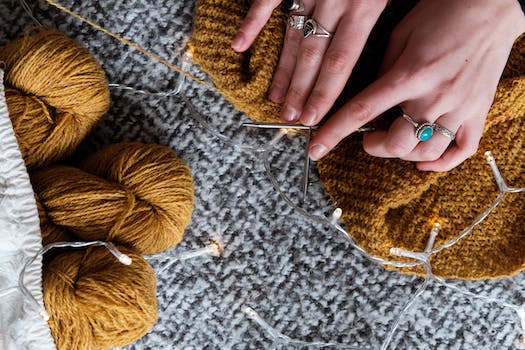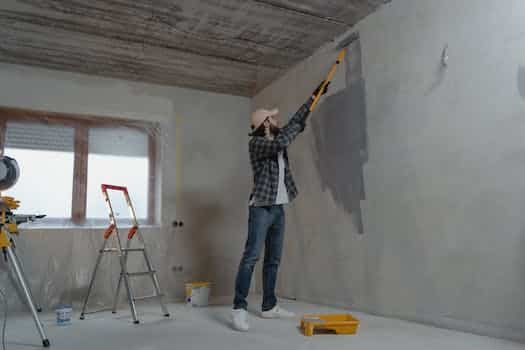The right lighting may completely change the mood and atmosphere of your garden, patio, or porch. New light fixtures, however, can be expensive. The good news is that you don’t have to spend a fortune on professional lighting fixtures to make your home feel warm and inviting. This post will discuss ten of the best do-it-yourself lighting options for illuminating outdoor areas.
- 1. Introduction
- 1.1. Why lighting is important for outdoor spaces
- 1.2. The benefits of DIY lighting
- 1.3. Factors to consider before starting your DIY lighting project
- 1.4. Tools and materials you will need
- 1.5. Safety precautions to keep in mind
- 2. Types of DIY Outdoor Lighting
- 2.1. String lights
- 2.2. Solar lights
- 2.3. Mason jar lights
- 2.4. Tiki torches
- 2.5. Candles and lanterns
- 3. Step-by-Step Guide to Installing DIY Outdoor Lighting
- 3.1. Planning your lighting design
- 3.2. Prepping your outdoor space
- 3.3. Installing your lighting fixtures
- 3.4. Connecting your lighting fixtures to a power source
- 3.5. Testing your lighting system
- 4. Tips and Tricks for DIY Outdoor Lighting
- 4.1. Choosing the right bulbs
- 4.2. Using timers and dimmers
- 4.3. Creating ambiance with lighting
- 4.4. Incorporating lighting into your landscaping
- 4.5. Maintaining your DIY lighting system
- 5. Conclusion
1. Introduction
Outdoor areas are perfect for social gatherings and unwinding with loved ones. The lack of adequate lighting, however, might render such areas unusable once the sun goes down. Thankfully, there are numerous low-cost do-it-yourself lighting alternatives that may completely transform your outdoor space. Here are 10 of our favorite do-it-yourself lighting ideas for setting the mood at your outdoor events.
1.1. Why lighting is important for outdoor spaces
Any outdoor area is not complete without proper outdoor lighting. It adds to the curb appeal of your home and makes it more secure at the same time. With the right illumination, your outdoor space can become a place to spend quality time with friends and family. The perfect lighting can transform any outdoor event, from a party to a barbeque to a peaceful evening with friends and family. The importance of outdoor lighting will be discussed, and 10 easy and inexpensive DIY lighting projects will be shown to help you set the mood.
1.2. The benefits of DIY lighting
Do-it-yourself lighting is an easy and inexpensive method to give your outdoor area a unique look and feel. Light up your outdoor space in style without breaking the bank by improvising with some ingenuity and inexpensive materials. DIY lighting not only saves money, but also lets you tailor your lighting to your unique tastes and requirements. Whether you want to set the mood for an intimate supper for two or a lively outdoor celebration, DIY lighting is a great way to do just that. Why not try it then? You may have a well-lit outdoor area for very little money with these 10 easy and inexpensive DIY lighting options.
1.3. Factors to consider before starting your DIY lighting project
In order to ensure the success of your do-it-yourself lighting project, you should first think about the following. Your outdoor area’s dimensions, the kind of lighting you envision, and your comfort with technical challenges all play a role. A successful installation depends on careful planning and the collection of all required components before work can begin.
1.4. Tools and materials you will need
It’s crucial to get everything together you’ll need before getting into the various DIY lighting solutions for outdoor locations. Some of the things you’ll need are listed below.
Lights on a String
2 – Mason jars
Lighting powered by the sun (3)
LED light bulbs, number four
Rope lighting 5.
Cans, tin, 6,
7. Brushes 8. Shears
9. Drill
Ten. Fasteners with hooks and screws
Having these supplies on hand will make it simpler to finish each task and make your outside area feel just right.
1.5. Safety precautions to keep in mind
Homeowners who want to spruce up their outdoor areas on a budget can choose from a variety of low-cost, do-it-yourself lighting alternatives. Working with electrical components and wires, however, requires special caution. Important safety considerations for do-it-yourself outdoor lighting installations include as follows:
2. Types of DIY Outdoor Lighting
There are many low-cost do-it-yourself choices for outdoor lighting. The most well-liked ones are listed below:
A popular option for outdoor lighting, string lights can be stretched across a patio or deck to create a cozy ambiance.
Putting a little lamp inside a mason jar makes for a charming and rustic outdoor light.
To illuminate your garden or walkways without draining your electricity supply, consider installing solar lights.
Tiki torches can be loaded with citronella oil to keep mosquitoes at bay, making them an ideal accessory for a luau or other island-themed gathering.
Light up your outdoor space with lanterns, whether they’re paper or metal, by hanging them from trees or setting them on tables.
2.1. String lights
String lights are a common do-it-yourself option for outdoor illumination. These lights are so adaptable that you can hang them from trees, pergolas, or any other outdoor structure to make it feel more cozy and intimate. White or multicolored strands are only two of the many color and design options available. String lights are versatile and simple to set up in any outdoor area. String lights are perfect for any do-it-yourself outdoor lighting project, whether you want to make your backyard into a relaxing refuge or throw a party.
2.2. Solar lights
DIY outdoor lighting projects often incorporate solar lights due to their low cost, portability, and little maintenance requirements. From miniature path lights to massive hanging lanterns, you can find them everywhere. Since solar lights are charged throughout the day, they instantly illuminate at night. They are good for the environment and can help save money on utilities. Solar-powered string lights, spotlights, and decorative lanterns are just a few of the many options available.
2.3. Mason jar lights
Lighting your outdoor area with mason jar lights is both stylish and budget-friendly. Mason jars, LED lights, and imagination are all you need. You can put them everywhere you want light—from trees to tables to pathways. Mason jar lights are adaptable and may be designed to complement a wide variety of decors. They can be a fun do-it-yourself activity for you and your loved ones.
2.4. Tiki torches
Outdoor lighting using Tiki torches is a timeless and cost-effective choice. They give off a warm and welcoming light while also discouraging insects. Tiki torches range from little, handheld bamboo torches to large, elaborate metal candelabras. Simply setting them in the ground or on a solid base will suffice for installation. Citronella oil in the torches will keep the mosquitoes at bay, so you can spend an insect-free evening outside.
2.5. Candles and lanterns
Traditional outdoor lighting options include candles and lanterns. They are great for small gatherings and romantic evenings because of the intimate environment they provide. Clusters of candles, protected from the wind by jars or lanterns, make a beautiful centerpiece. Different types of lanterns can be strung from trees or set on tables. You may easily make your own candles and lanterns and give them a unique look by painting or decorating them.
3. Step-by-Step Guide to Installing DIY Outdoor Lighting
DIY outdoor lighting installation might be an intimidating task, but with the right instructions, it can be a rewarding and enjoyable weekend job. Here are the fundamentals of DIY outdoor lighting installation:
The first step in creating a beautiful lighting scheme is to plan where and how you’ll be installing the lights.
Second, collect your supplies; buy the electrical equipment, wiring, and any other components you’ll need.
Third, plug in the transformer, which will turn the standard household current into the low voltage required by the light fixtures.
The fourth step is to plan the wiring: dig a hole in the earth and run the wires there.
Fifth, connect the wire: connect the wiring to the transformer and lights in accordance with the manufacturer’s instructions.
Turn on the lights to make sure they are functioning properly during the test.
Seventh, hide the wires: bury the wires and then cover them with mulch or dirt.
An attractive and practical outdoor lighting design can be made by following these instructions.
3.1. Planning your lighting design
Before you go and wire up your entire backyard, you need sit down and plan out your lighting layout. Determine which parts of your outdoor space require illumination and which kind of lighting would work best. Think about the dimensions of your area and any elements like trees, walkways, or benches that are already there. Consider the desired ambiance and how various lighting fixtures might help you accomplish it. When you have a strategy in place, DIY outdoor lighting installation is a breeze.
3.2. Prepping your outdoor space
Eating healthily can do wonders for your gastrointestinal tract. When you cut out processed foods and instead eat complete, nutrient-dense foods, you give your body everything it needs to digest those foods. This may enhance regularity, reduce gas and bloating, and relieve discomfort. Clean eating has been linked to a decrease in intestinal inflammation and consequently better digestive health.
3.3. Installing your lighting fixtures
At first glance, installing outdoor lighting fixtures may appear to be an insurmountable task; yet, with the correct equipment and a little bit of patience, it can be a straightforward do-it-yourself endeavor. For a trouble-free set up, try these methods:
First, take into account the dimensions and layout of your outside area as you plan the placement of lights. Consider if you’ll need task lighting or ambient lighting (or both) and plan accordingly.
To begin, assemble everything you’ll need, including a voltage tester, wire connections, wire cutters, and light fixtures.
Third, disconnect the circuit breaker for the room where the light fixtures will be installed.
Fourth, attach the mounting bracket to the wall or ceiling as directed by the fixture’s manufacturer.
Fifth, attach the wires to the light, taking care to pair like colors (black to black, white to white).
Connect the wires together with wire connectors to make them more secure and weatherproof.
Seven, fasten the fixture to the wall plate using the provided hardware.
After that, you should power everything back up and check the lights with a voltmeter.
Follow these guidelines to install attractive and practical outdoor lighting.
3.4. Connecting your lighting fixtures to a power source
An essential part of building your own DIY outdoor lighting is connecting your fixtures to a power source. Following this advice will ensure that your light fixtures are connected correctly and without incident.
In order to begin installing your lighting fixtures, you must first disconnect the electricity to the area. In this way, you won’t have to worry about getting electrocuted when fixing the wires.
Determine the wattage of your light bulbs, and then select the wire size and type accordingly. If you aren’t sure how the wiring should be set up, call an electrician.
Third, using wire strippers, remove about a quarter-inch of insulation from each wire’s end.
Fourth, join the circuit by joining the power supply wires to the wires leading to the light fixtures with wire connectors. Make sure the wires are securely connected and the terminals are tightened.
Turn the power back on and check the lighting’s connections to make sure everything is in working order.
In just a few easy steps, you’ll have your outdoor lighting up and running so you can bask in its glow and benefit from its practicality.
3.5. Testing your lighting system
Certain items are off-limits for those who adhere to a “clean eating” lifestyle. Trans fats, artificial sweeteners, refined sugar, and processed foods all fall into this category. Added sugars, preservatives, and chemicals are common in processed foods and can have negative health effects. Many health problems have been related to the use of refined sugar and artificial sweeteners, both of which can produce dangerous rises in blood sugar. Fried and baked goods often include trans fats, which have been linked to an increased risk of cardiovascular disease. Avoiding these items will help you stick to a healthy diet and feel better.
4. Tips and Tricks for DIY Outdoor Lighting
The term “clean eating” refers to a diet that emphasizes the consumption of natural, unaltered foods that have not been subjected to any kind of processing. The diet emphasizes whole, nutrient-dense meals that give the body the energy it needs to perform at its best. Clean eating can help you lose weight and keep it off, increase your energy, and lower your chance of developing chronic diseases like diabetes, heart disease, and cancer by eliminating processed junk foods, sugary drinks, and other unhealthy choices. If you want to start eating healthier, consider the following advice:
4.1. Choosing the right bulbs
When designing the ideal outdoor lighting scheme, selecting the appropriate bulbs is of the utmost importance. LED bulbs are excellent because they last a long time and consume less energy. They may be dimmed to the desired level and available in a wide range of colors. Choose light bulbs with a color temperature between 2700K and 3000K for a cozy and welcoming ambiance. The 5000K-6000K range of color temperature is perfect for creating a hip and contemporary atmosphere. Keep in mind that the brightness of the bulbs can have a significant impact on the ambience of your outdoor environment.
4.2. Using timers and dimmers
DIY outdoor lighting may be made more practical and efficient with the use of timers and dimmers. You can save energy and make sure your outdoor space is well-lit with the help of timers, which allow you to set a certain time for your lights to turn on and off. On the other side, dimmers let you control how bright your lights are, which is great for setting the scene. Your do-it-yourself outdoor lighting installation can be made more dynamic and flexible with the addition of timers and dimmers.
4.3. Creating ambiance with lighting
Lighting has an important part in establishing mood in an outdoor setting. The perfect lighting can make a drab, uninviting place feel like an extension of your home and completely change its entire vibe. There are a plethora of do-it-yourself lighting solutions that can help you get the desired effect in your patio, deck, or garden. Here are some pointers on how to use outdoor lights to set the mood:
4.4. Incorporating lighting into your landscaping
Eating a healthy, clean diet has been linked to improved mental health, including fewer episodes of anxiety and despair. This is because the body’s hormones and neurotransmitters that affect mood can be better regulated by eating a balanced diet rich in full, nutrient-dense meals. Depression and other mental health illnesses have been related to inflammation in the body, which can be reduced by avoiding processed and sugary meals. Both your physical and mental health can benefit from making healthy eating a priority and a permanent part of your routine.
4.5. Maintaining your DIY lighting system
DIY lighting systems require regular maintenance to ensure they continue to perform as intended and supply adequate illumination. Maintaining your outdoor lighting properly involves the following steps:
First, keep the lighting fixtures clean so that dust and other particles don’t accumulate and obscure the bulbs.
2. Make sure all wiring and connections are secure and undamaged by checking them at regular intervals.
Third, make sure your outdoor area is consistently illuminated by replacing burned-out bulbs as soon as possible.
Installing a timer or sensor to turn lights on and off automatically can increase their useful life by a significant amount.
The fifth piece of advice is to choose high-quality materials and to install them correctly to reduce the likelihood of damage or malfunction.
5. Conclusion
In conclusion, if you use these 10 easy and cheap DIY lighting solutions for outdoor spaces, you can turn your backyard or patio into a warm and inviting space you can enjoy day or night. There is a wide variety of lighting alternatives available, including string lights, lanterns, and solar-powered lights. You can make an impressive outdoor lighting display with just a little ingenuity and some inexpensive supplies. Proceed with your do-it-yourself lighting installation now.
5.1. The cost savings of DIY outdoor lighting
Do-it-yourself outdoor lighting can save you a ton of money compared to hiring an expert. Homeowners can create attractive and practical outdoor lighting without breaking the bank by making use of inexpensive materials and reusing objects found around the house. In addition, do-it-yourself projects encourage individualization and innovation, which leads to special and distinctive illumination schemes. DIY outdoor lighting is a terrific alternative for homeowners who want to improve their outside spaces because of the money it saves and the freedom it provides.
5.2. The satisfaction of creating your own lighting design
It’s possible to get a great sense of accomplishment after designing your own lighting system. You can show off your artistic skills, and then bask in the glory of your accomplishments every time you go outside. You don’t have to go into debt to have a beautiful outdoor area when you use these easy DIY lighting options. So, get the necessary materials, and go to work on that lighting upgrade right away.
5.3. The joy of enjoying your outdoor space at night
Finally, if you want to turn your outside area into a warm and attractive place to spend evenings, there are numerous inexpensive lighting solutions you can do yourself. There is a wide variety of lighting fixtures from which to pick, including string lights and lanterns. Whether you’re entertaining guests or taking in a quiet evening under the stars alone, your outside space will benefit from some well-placed lighting. So, don’t be shy about giving these strategies a shot on your own. The outdoor area will appreciate it.
5.4. Final thoughts and inspiration
In conclusion, there is no need to go to great lengths or spend a lot of money to illuminate your outside areas. You can improve the aesthetics and utility of your outdoor spaces with a little ingenuity and the ability to handle some of the work yourself. There is no limit to what can be made, whether you chose to recycle existing materials or start from scratch. The time to get motivated, gather your supplies, and illuminate your outside areas is now!
Conclusion
Finally, with these 10 low-cost DIY lighting options, you can make your outside space feel more welcoming and comfortable. There are a wide variety of options available, from solar-powered lights to mason jar lanterns. Make your outdoor space stand out by using your imagination.






These 10 innovative and imaginative DIY home decor ideas from [object Object] provide a refreshing approach to enhancing ones living…